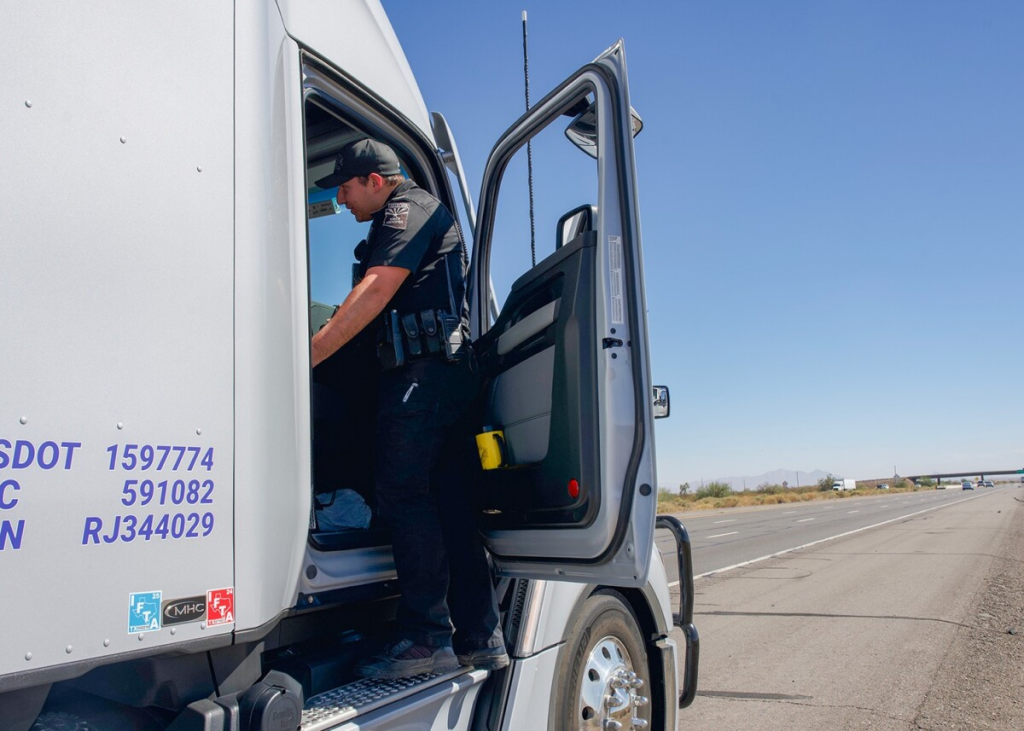Duffy rétablit le contrôle des compétences en anglais des camionneurs américains
Le secrétaire américain aux transports, Sean Duffy, a annoncé le rétablissement officiel des compétences en anglais (ELP) comme critère de mise hors service des conducteurs commerciaux, ce qui a relancé le débat sur la réglementation du camionnage et la sécurité routière. S'exprimant à Austin, au Texas, aux côtés de dirigeants de l'industrie et de la Texas Trucking Association, M. Duffy a souligné que le rétablissement de l'application de l'ELP était une mesure "de bon sens" visant à rétablir les normes de sécurité et la responsabilité sur les routes américaines.
Soutenues par le décret du président Donald Trump, les nouvelles orientations marquent un net revirement par rapport à la politique de 2016 de l'ère Obama, qui décourageait les forces de l'ordre d'expulser les conducteurs uniquement sur la base de barrières linguistiques.

Maîtrise de la langue anglaise
1. L'inversion des politiques : La fin de l'ère des "coups de poignet
Le secrétaire d'État Duffy a critiqué directement les tendances antérieures de la FMCSA en matière d'application de la loi. Il a cité des données de 2015 montrant que
- 99 000 infractions à la législation sur la maîtrise de l'anglais, avec
- 1 000 conducteurs ont été mis hors service.
En revanche, d'ici 2024 :
- Les infractions sont tombées à 10 000, et les
- Aucun conducteur n'a été retiré de la circulation pour des problèmes liés au PEL.
"Il ne s'agit pas d'une question bureaucratique", a déclaré M. Duffy. "C'est une question de sécurité. Si vous ne comprenez pas l'anglais, vous ne pouvez pas circuler en toute sécurité sur les routes américaines. Un point c'est tout".
2. Le soutien de l'industrie : Une "bonne journée pour le bon sens"
La Texas Trucking Association et l'Owner-Operator Independent Drivers Association (OOIDA) ont toutes deux salué la décision.
Le président de l'OOIDA, Todd Spencer, a déclaré :
"La seule chose qui sépare les voyages sûrs des voyages mortels peut être un simple panneau de signalisation.
Les représentants de l'industrie ont souligné que l'impossibilité de communiquer avec les forces de l'ordre lors des contrôles routiers crée des risques inutiles pour la sécurité. John Esparza, président de la Texas Trucking Association, a ajouté : "C'est fondamental. Si vous le faites, vous assurez la conformité à l'application de la loi et vous ne pouvez pas communiquer. Comment ajouter"
Initiatives 3.DOT : L'ELP n'est qu'un début ?
Si l'application du PEL a occupé le devant de la scène, le secrétaire d'État Duffy a également abordé des réformes réglementaires plus vastes visant à relever le niveau général de qualification et de conformité des conducteurs. Les principales initiatives sont les suivantes :
- Révision des protocoles CDL non domiciliés
- Améliorer les systèmes de vérification des CDL
- la résolution des problèmes liés à la qualité de vie des camionneurs, tels que la pénurie de places de stationnement et les conditions de travail dangereuses
Le ton de M. Duffy a été ferme, alignant la mission du ministère des transports sur le message de l'administration dans son ensemble. Citant la phrase désormais célèbre de M. Trump après sa tentative d'assassinat - "Fight, fight, fight" - M. Duffy a souligné que cette décision marquait le début d'une nouvelle impulsion en matière de réglementation.
4. Les critiques disent que l'accent est mal placé
Bien que la question n'ait pas été directement abordée lors de l'événement d'Austin, les détracteurs de l'application du PEL font valoir qu'il n'a pas été statistiquement prouvé que les compétences linguistiques étaient à l'origine d'accidents. Des données récentes de la FMCSA et des études sur la sécurité suggèrent que des questions telles que :
- Violations des heures de service (HOS)
- Conduite en état d'ébriété
- Carnets de bord falsifiés
- Licences ou certificats médicaux périmés
...sont bien plus prédictifs du risque d'accident que les compétences linguistiques.
Ces critiques affirment que le retour de l'application du PEL pourrait détourner l'attention de ces questions de sécurité à l'impact plus important. Cependant, Duffy et ses partisans insistent sur le fait que les compétences linguistiques sont essentielles au respect des règles, notamment en cas d'urgence ou d'inspection.
5. Le Texas, un modèle national ?
Avec plus de $60 milliards de dollars de projets routiers et autoroutiers en cours, le Texas se positionne comme un modèle d'investissement dans les infrastructures et d'alignement des réglementations. J. Bruce Bugg Jr, président de la commission des transports du Texas, a souhaité la bienvenue à M. Duffy et s'est fait l'écho de l'appel lancé à tous les usagers de la route, qu'ils soient civils ou commerciaux, pour qu'ils veillent à la sécurité.
Compte tenu de la proximité de la frontière du Texas et de son volume de trafic routier en provenance du Mexique et de l'Amérique centrale, cet État est en première ligne pour ce qui est des fraudes au permis de conduire et des problèmes liés au permis de conduire européen. Les données suggèrent que ces mesures de contrôle visent principalement les États à forte densité frontalière, où les divergences en matière de documentation et de communication sont plus fréquentes.
Conclusion : Une voie plus claire ou une occasion manquée ?
Le rétablissement du contrôle de la maîtrise de la langue anglaise marque un retour à une surveillance plus stricte et s'inscrit dans le cadre d'appels plus généraux visant à renforcer les normes de sécurité dans l'ensemble du secteur des transports routiers aux États-Unis. Si certains saluent cette mesure de bon sens qui rétablit la confiance dans les contrôles routiers, d'autres avertissent qu'elle pourrait occulter des problèmes de sécurité systémiques plus profonds.
Ce qui est clair, c'est que cette décision marque un changement décisif dans le ton de la réglementation, qui replace le respect de la langue sur la liste des qualifications essentielles pour les 3,5 millions de camionneurs américains.
Appel à l'action
Vous souhaitez rester informé des réglementations américaines en matière de camionnage, des changements de politique en matière de CDL et des tendances en matière d'application de la loi dans le secteur ? Abonnez-vous à notre blog pour obtenir des informations hebdomadaires sur :
- Modifications des règles de la FMCSA et du DOT
- Normes de qualification des conducteurs
- Meilleures pratiques en matière de conformité du transport routier
- Développement des infrastructures dans les principaux corridors de fret
Aperçu de l'industrie
nouvelles via la boîte de réception
Nulla turp dis cursus. Integer liberos euismod pretium faucibua









De nombreux conducteurs de CDL à travers les États-Unis ne maîtrisent pas la langue anglaise et il n'est pas établi que la barrière de la langue ait contribué à des accidents. De nombreux conducteurs seront mis hors service en raison de l'exigence du PEL, ce qui aura un impact sur le commerce.
Le PEL (deux tests) sera-t-il uniformisé dans l'ensemble des États-Unis ? Je crois que certains États ont leurs propres exigences.